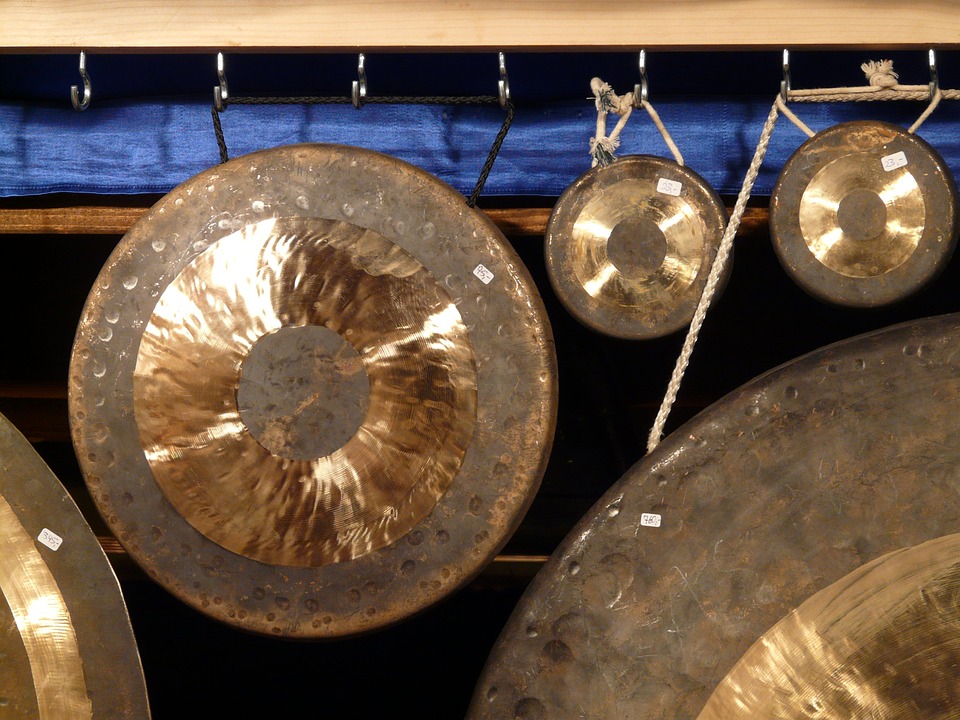The Gong is a flat circular metal disc percussion that is used in various ways including yoga healing section. The sound of this musical instrument “gong” is mystical, don’t you think so? Not just the shape, but also the sound it produces. There are many gongs for sale in the market. Here’s the history and what you want to know.
Origin
The gong has a rich Asian culture; it has both Southeast and East Asia origin. To be specific, the gong is a Chinese, Vietnamese, Indonesian, Javanese (ethnic group in Indonesia), Thai, Pinyin, and Malay. The use of the gong in the famous Oracle of Dodona also made it plausible for the gong to share part of its origin in Central Asia (Rome and Greece).
The exact years of this instrument are not definite, but the Chinese have been using the gong for over a century. However, it was not used as a musical instrument but as a signal to call the peasant workers in from the fields while the Japanese use it as a starting bell during sumo wrestling contests.
Types of gongs
The beauty of this musical instrument lies in its color, shapes, sound, and versatility. There are different types of Gongs; to avoid confusion it is mainly divided into three groups;
- The bowl gongs
- The suspended gongs
- The bossed gongs
Furthermore, there are other types of Gongs such as Opera gongs (Chinese orchestra), Pasi gongs, Sculptural gongs, Tiger gongs, Opera gongs, Wind gongs and Shueng Kwong,
The Bowl gongs: just like the name, has a bowl-like shape which is usually placed on buffers or cushions unlike the suspended gongs and the bossed gongs.
The Suspended gongs: these gongs are flat, and a round-disc shape made of metal. It is suspended vertically by a cord; the suspended gong is strapped through holes close to the top of the rim.
A traditional suspended gong is called the tam-tam. The Chinese use it for rituals and tribal meetings and also, in processions and for prominent officials. The number of strokes indicates the level of the position of the official(s).
In 1970, a French composer François-Joseph Gossec introduced the tam-tam as an orchestral instrument. Presently, the tam-tam has become an important musical instrument in a symphony orchestra.
To play the smallest suspended gongs, you need to use the western-style drumsticks or bamboo sticks while softer and larger hammers for playing the bigger gongs. However, to produce harmonics, friction mallets are the right sticks to use. Bass bows produce high overtones and long tones.
The Bossed gongs: it is also known as the nipple gongs because of its raised nipple at the middle of the gong and the Chinese use the bossed gongs in the temples.
The bossed gongs are hung like the suspended gongs, but not in an upright position like the suspended gong; it is attached and played horizontally.
The bossed gongs come in different metals, resonance, and qualities. The sizes range from fifteen to fifty-one centimeter.
Sounds
The gongs have two types of sounds; the tuned note, and the “crash.” You can get the “crash” sound from a flat-surfaced gong (tam-tam) while the bossed or nipple gong produces the tuned note.
Nevertheless, the Gongs can also serve as signal tools for other applications such as;
- Theatre
- Rail mounted
- Rail crossing
- Vehicle mounted
- Boxing
- Time signals
If you hear a warning bell at a Rail crossing, it is the beautiful gong telling you to hold still.

